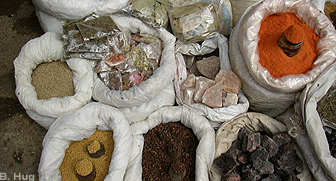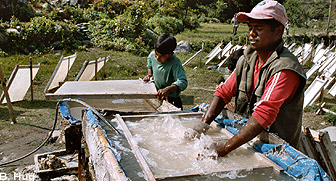|
The
Kathmandu valley is the hub of Nepal for its political, commercial and
cultural activities and is the first stop for the majority of the visitors
to the country. Once separate kingdom in itself, it consists of three cities
of the great history. Every one has an artistic exposition of graceful
temple, elegant palace, brick-paved courtyards and quaint streets.
The
history begins with the Buddhist saint Manjushree who slashed a passage
through the surrounding hills to drain out primordial water and made it
habitable. Over the centuries, a refined urban civilization emerged, built
on a unique synthesis of Hinduism and Buddhism. Dynasties came and went
trade and the arts flourished. its deeply religious Newars' inhabitants
built fabulous cities and artistic temples that attracted devout pilgrims
as well as ramping invaders. In the date late 18th century, following the
founding of modern Nepal with in more or less the present boundaries, Kathmandu
was made the capital. It is said that 'Katmandu' was named after Kastamandap
an imposing pagoda next to Hanumandhoka palace. The city is said to built
in its present form by Gunakama Dev 724 AD. Followings are the major tourist
attractions in the Katmandu Valley.
 |
Durbar
Square |
This
complex of palaces, courtyards, and temples are built on 12th to 18th centuries
used to be the seat of the ancient Malla kings of Kathmandu. An intriguing
piece here is the 17th century stone inscription set in to the wall of
the palace with writing in 15 languages. The Durbar Square protected as
an UNESCO World Heritage Site, is the social, religious and urban focal
point of the city. There are three museums inside the palace building.
 |
Swoyambhunath
Stupa |
This
is one of the most glorious Buddhist Stupa, which is the oldest shrine
of Kathmandu valley. Visitors often call it "Monkey Temple". The Stupa
is formed with a solid hemisphere of bricks and clay supporting lofty conical
spire capped by a pinnacle of copper gilt. Painted on four sides of the
spire are the all-seeing eyes of Lord Buddha. It is three kilometers west
of Kathmandu and located on the hilltop nearly 700 meters above the sea
level of the valley.
 |
Pashupatinath
Temple |
One
of then most sacred Hindu shrines of the world, Pashupati Nath lies 6 km
east of Katmandu City center. Is famous for its superb architecture with
its two tired golden roof and silver doors. It is a center of annual pilgrimage
of Mahasivaratri. The richly ornamented pagoda houses the sacred LINGA
or phallic symbol of Lord Shiva. Chronicles indicate the temple's existence
prior to 400 AD. Devotees can be seen taking ritual dips in the Holy Bagmati
River following beside the temple, also a World heritage Site.
 |
Boudhanath
Stupa |
One
of the world's largest Stupa, Boudha is generally acknowledged to be the
most important Tibetan Buddhist monument outside Tibet. Tibetans simply
call it CHORTEN CHEMPO "Great Stupa". It has now become the Mecca of Tibetan
exiles in Nepal. Walking around Boudhnath one often fins men wearing long
braids wrapped around their heads. Many of these pilgrims carry their own
prayer wheels, which they spin incessantly.
 |
Bhudhanilkantha |
It
is situated below Shivapuri hill at the northern end of the valley. It
is about 10 km from the city venture. The hub of the temple is a pond,
in which lies a great stone figure of the Hindu god Vishnu reclining on
a bed of snakes. It is the 5th century statue during the Lichachhavi period
 |
| Courtesy of
Association for Tourism, Nepal |
| 
